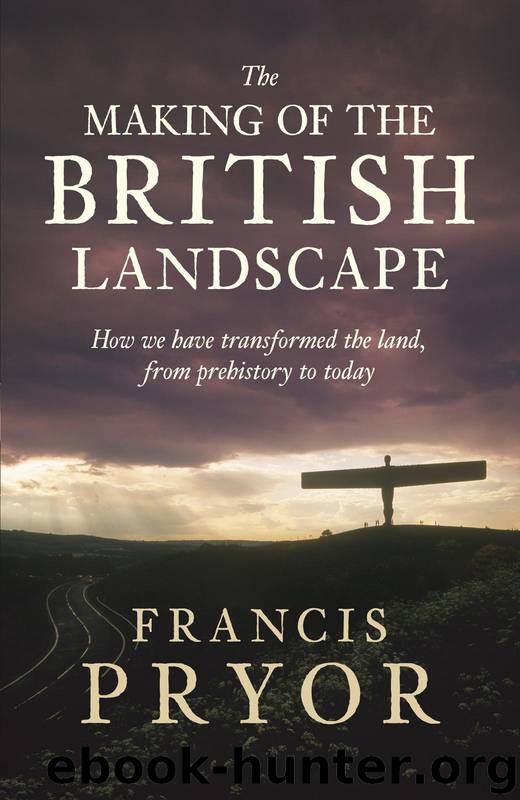The Making of the British Landscape by Pryor Francis

Author:Pryor, Francis [Pryor, Francis]
Language: eng
Format: mobi, epub
Published: 2010-04-19T23:00:00+00:00
SPAS AND RESORTS IN THE EIGHTEENTH CENTURY
I noted at the start of this chapter that resorts and spa towns played an important part in the development of Britain as an industrial and mercantile centre. They were not just about leisure, any more than the Lord Mayor’s annual banquet in the Guildhall is about food. They were important social centres that helped to keep the wheels of commerce turning, but they were also major regional employers. In landscape terms these towns are some of the most elegant in Britain, which is why many of them still continue to attract visitors.
As with other towns of the post-medieval period, it is impossible to generalize about spas and resorts because each has its own story to tell, but some of the common themes that emerge are the wish to retain health and youth, the need to meet and socialize with other people and the importance of maintaining social position.12 Most resorts and spas started life by catering for their patients but it was soon realized that those who stayed to take the waters had friends and families, whose needs also had to be taken into consideration. That is why the most successful spas developed areas of housing – whether in terraces or villas – that could accommodate the many visitors who accompanied those seeking treatment. As time passed the number of spas increased and competition intensified, whereupon many decided to move into different markets within the developing leisure sector. These tendencies became more marked from the mid-nineteenth century, with the arrival of the railways.
Bath has always been the principal spa town in England and its origins go back to the Iron Age, when its springs are known to have been popular. In Roman times fine classical buildings were erected around the springs of what became Aquae Sulis, the shrine to the goddess Sulis Minerva. This popularity continued into medieval times, but Bath only became a spa town, as we would understand the term today, in the sixteenth century. Bathing in its warm waters was believed by doctors to have a curative effect on many disorders, ranging from skin diseases and gout to lead poisoning. Physicians took up permanent residence near the springs and it was plainly in their interest to encourage patients to visit them. Further visitors or patients arrived when the drinking of spa water became popular as a cure for internal problems, from the seventeenth century onwards. Spa water was not a ‘rapid fix’, whether taken in a bath, or internally, and patients were encouraged to take up residence near the springs, together with their family and friends, for a protracted stay. Soon the increasing numbers had to be accommodated by the building of new pump rooms in the early eighteenth century.
Download
The Making of the British Landscape by Pryor Francis.epub
This site does not store any files on its server. We only index and link to content provided by other sites. Please contact the content providers to delete copyright contents if any and email us, we'll remove relevant links or contents immediately.
| Historic | Information Systems |
| Regional |
Man-made Catastrophes and Risk Information Concealment by Dmitry Chernov & Didier Sornette(5951)
The Revenge of Geography: What the Map Tells Us About Coming Conflicts and the Battle Against Fate by Kaplan Robert D(4052)
Zero Waste Home by Bea Johnson(3804)
COSMOS by Carl Sagan(3584)
Good by S. Walden(3516)
In a Sunburned Country by Bill Bryson(3506)
The Fate of Rome: Climate, Disease, and the End of an Empire (The Princeton History of the Ancient World) by Kyle Harper(3030)
A Wilder Time by William E. Glassley(2833)
Camino Island by John Grisham(2778)
Organic Mushroom Farming and Mycoremediation by Tradd Cotter(2660)
The Ogre by Doug Scott(2657)
Human Dynamics Research in Smart and Connected Communities by Shih-Lung Shaw & Daniel Sui(2479)
Energy Myths and Realities by Vaclav Smil(2461)
The Traveler's Gift by Andy Andrews(2433)
9781803241661-PYTHON FOR ARCGIS PRO by Unknown(2341)
Inside the Middle East by Avi Melamed(2325)
Birds of New Guinea by Pratt Thane K.; Beehler Bruce M.; Anderton John C(2235)
A History of Warfare by John Keegan(2210)
And the Band Played On by Randy Shilts(2163)
